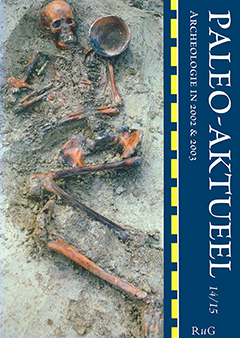Over benen werktuigen en deposities van runderhorens De betekenis van de categorieën wild en gedomesticeerd voor de Swifterbantcultuur
Samenvatting
The transition period from hunting and gathering to farming seems a perfect period to give meaning to the newly available animal species. The question is whether these new species were seen as ideal for ritual/symbolic actions such as deposition, or were seen as unsuited (taboo). This question is studied on the basis of bone tools and depositions of cattle horns from the Swifterbant culture of north-western Europe (c. 5000–3400 cal. BC). The finds suggest that the dichotomy of wild against domesticated was not relevant to the people of the Swifterbant culture.

